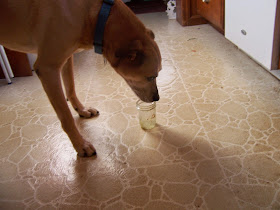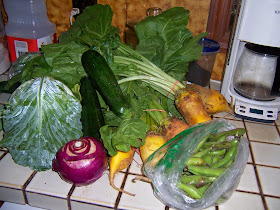There are times when I wish I could control what comes out of my head, so I don't act like a total "JB".
(If you and yours don't use the phrase "JB", here's where my husband picked it up before he passed it along to me: a television segment called the "Judgmental Bastard". As you might expect from the title, this clip doesn't conform to Miser Mom's usual level of decorum, civility, and respect for others, so viewer discretion is advised).

I don't want to be a JB. I don't want to pre-judge people (after all, that's what "prejudice"means). But there are situations where it's more reflex than reason that has me scoffing at people and thinking ill of them.
(If you and yours don't use the phrase "JB", here's where my husband picked it up before he passed it along to me: a television segment called the "Judgmental Bastard". As you might expect from the title, this clip doesn't conform to Miser Mom's usual level of decorum, civility, and respect for others, so viewer discretion is advised).

I don't want to be a JB. I don't want to pre-judge people (after all, that's what "prejudice"means). But there are situations where it's more reflex than reason that has me scoffing at people and thinking ill of them.
- The very overweight person sitting in a large car in a parking space, with the engine idling, talking on a cell phone and/or eating something from a fast food place. I am even worse about this if I see this person while I myself am out running or biking. This situation comes up more often than I would expect, and my head is not nice to these people.
- The adult (presumably, parent) of an incessantly whiny child in a public space. I'm even more insufferably haughty if the parent is somehow trying to reason with the toddler.
- The supposedly well-educated person who misuses grammar. A "lie" vs. "lay" mistake will automatically dump someone into the category of "those kind of people" in my head.
- [True story: the day before she died, my mother -- who was suffering from the advanced stages of alzheimer's and was recovering from surgery on a broken hip -- got out of her hospital bed and started wandering. A nurse came by and said, "Carol, don't you want to lay down?" My mom, blind without her glasses, brain riddled by alzheimer's, and doped up on pain meds, turned to the nurse and said, "I think you mean lie down". I come by my grammar obsession genetically, it seems.]
These things, I'm not proud of. Well, I mean, I am proud, but I wish I weren't, if that makes sense.
Here's the email I got recently that provoked this whole post. For professors, these emails are kind of like credit card offers, because they come unsolicited and are really more clutter than anything else -- it's an "exclusive offer" sent only to everyone who happens to be in that particular database.
Here's the email I got recently that provoked this whole post. For professors, these emails are kind of like credit card offers, because they come unsolicited and are really more clutter than anything else -- it's an "exclusive offer" sent only to everyone who happens to be in that particular database.
We are now expanding our editorial board membership and would like to invite you to join us as our editorial board member under the category of Regional Editor.I'm sure that the person who sent this is a good-hearted person. A person who wants to advance knowledge and to help scientists communicate their ideas. A person who truly does want to "improve quality and citation of the journal". Misplaced commas and missing articles are not actually a window into a person's moral fiber, I know. I have no problem politely turning this offer down; I just wish that my first instinct weren't to sneer.
I am sure, your ideas, research, experiments, publications and determination would be really helpful to improve quality and citation of the journal.
I look forward to your reply.
Regards,
[name]
Editorial Coordinator
Editorial Office
Science Publications





































